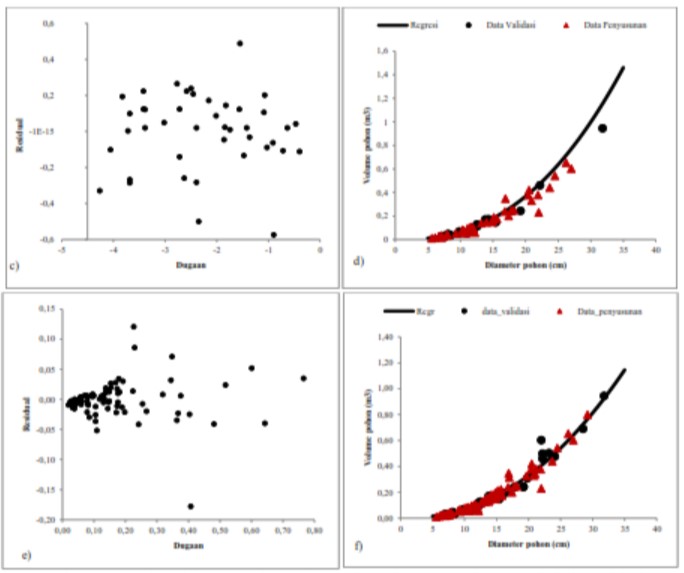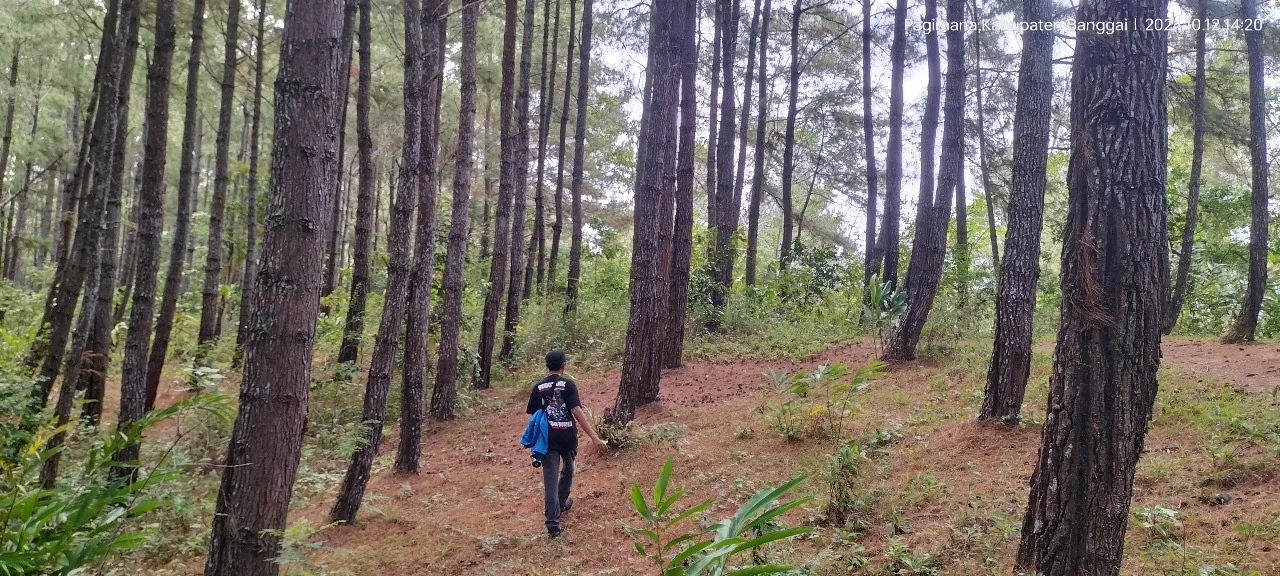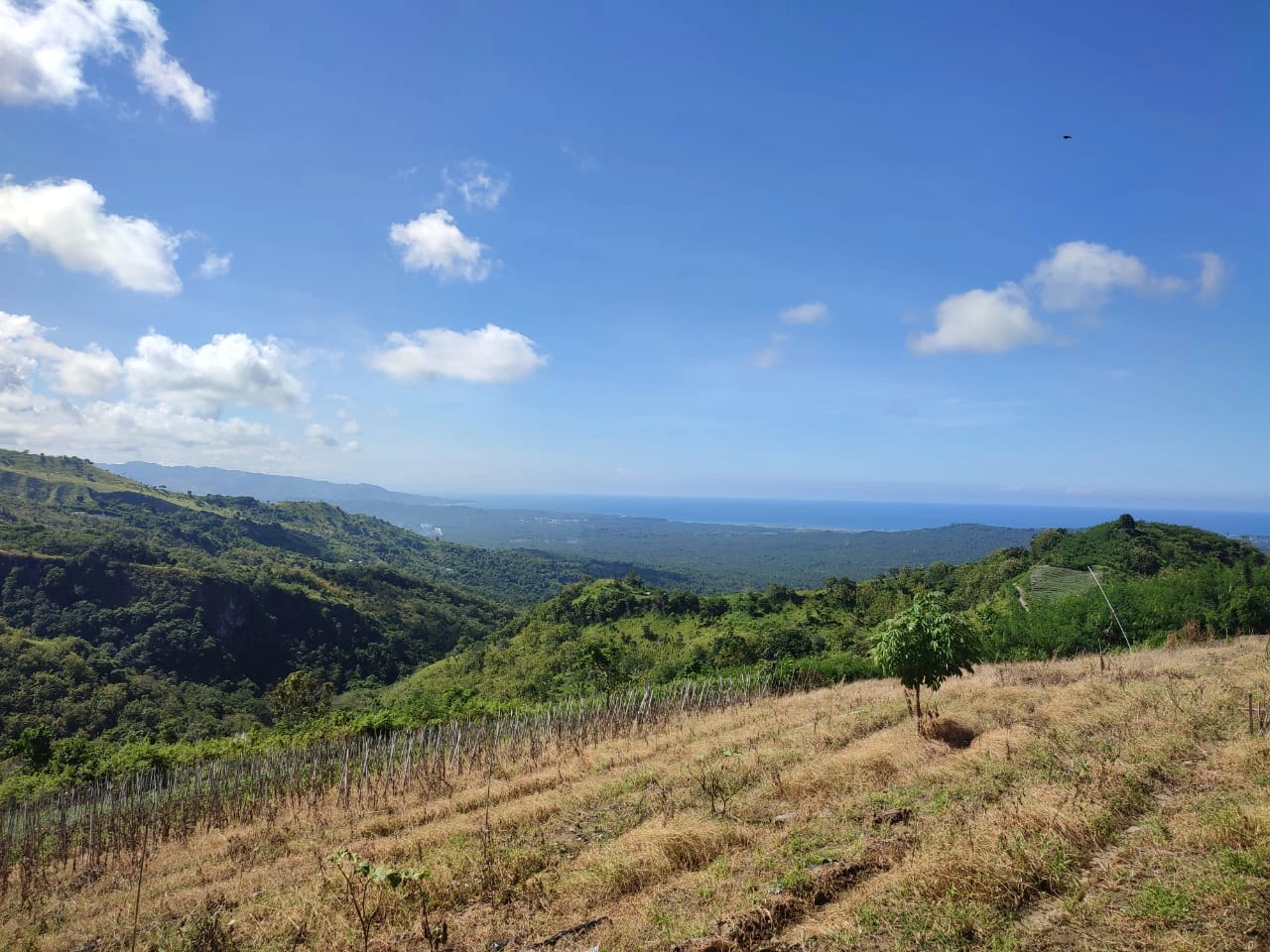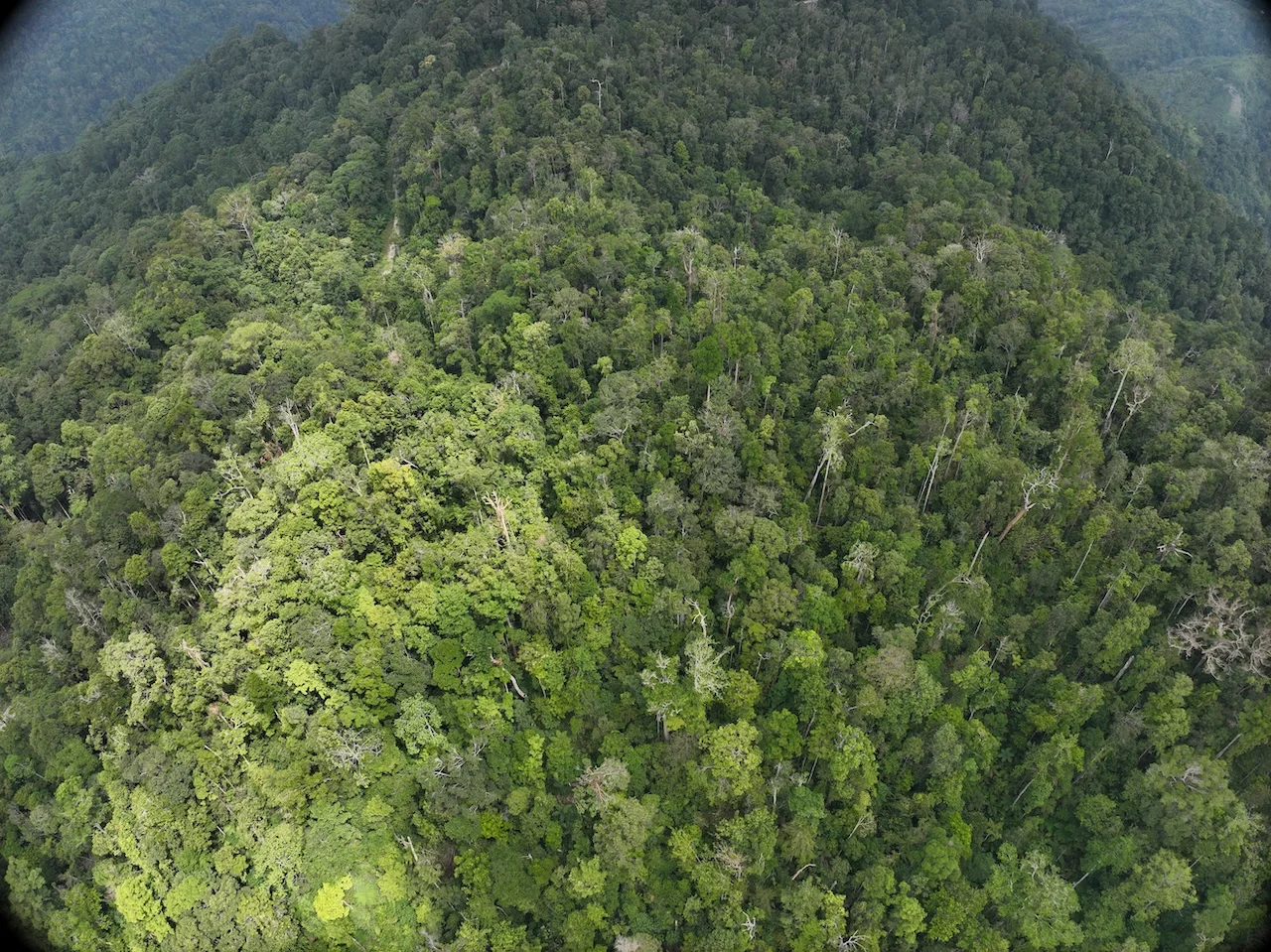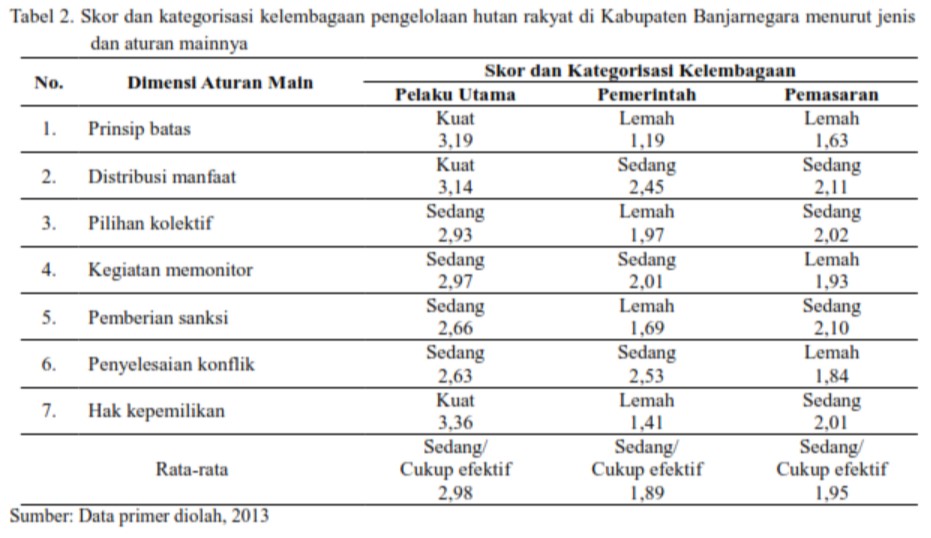The Volume Model of Tree Species Group in Peat Swamp Forest at Logging Concession Area of Tingang Karya Mandiri, Central Kalimantan
Abstract
Tropical peat swamp forest (PSF) has a high species diversity and value including timber value. The valuation of timber is approached by calculating the stand volume. However, the volume model at PSF is not available for every species and species groups in specific site. This study aims to obtain a volume estimation model of species groups of tree species in peat swamp forest in Central Kalimantan. The model development and validation used 120 sample trees of the dipterocarpaceae and non-dipterocarpacae species. The distribution of sample trees is 70 % for the development model and 30 % for the validation stage. Modeling used linear and non-linear models). The selection of the best model used several criteria including: coefficient of determination, relative deviation (SR <8 %) and aggregation (SA <1 %), presumptive bias (s and RSE: Root Square Errors), AIC (Akaike's Information criteriation), and NRMSE (Normalized Root Mean Square Errors). The results of this study indicated the Berkhout/diameter model as a single variable was very good in estimating the volume of trees at all levels namely species groups and all species except dipterocarpaceae groups. This model had a high coefficient of determination (R2 >95 %). The models compiled met the SA and SR criteria so that the models were very accurate in estimating tree volume at the tree level, as individuals and stands. The implication of this research was that the whole species model can be used to estimate the volume of trees in peat swamp forest.
Copyright (c) 2020 Jurnal Wasian

This work is licensed under a Creative Commons Attribution-NonCommercial 4.0 International License.
Copyright and License
All articles published in Wasian Journal are the property of the authors. By submitting an article to Wasian Journal, authors agree to the following terms:
-
Copyright Ownership: The author(s) retain copyright and full publishing rights without restrictions. Authors grant the journal the right to publish the work first and to distribute it as open access under a Creative Commons Attribution 4.0 International License (CC BY 4.0).
-
Licensing: Articles published in Wasian Journal are licensed under a Creative Commons Attribution 4.0 International License (CC BY 4.0). This license allows others to share, copy, and redistribute the material in any medium or format, and adapt, remix, transform, and build upon the material for any purpose, even commercially, provided that proper credit is given to the original author(s) and the source of the material

This work is licensed under a Creative Commons Attribution 4.0 International License. -
Author's Rights: Authors are permitted and encouraged to post their work online (e.g., in institutional repositories or on their website) prior to and during the submission process, as it can lead to productive exchanges and greater citation of published work.
-
Third-Party Content: If your article contains material (e.g., images, tables, or figures) for which you do not hold copyright, you must obtain permission from the copyright holder to use the material in your article. This permission must include the right for you to grant the journal the rights described above.
-
Reprints and Distribution: Authors have the right to distribute the final published version of their work (e.g., post it to an institutional repository or publish it in a book), provided that the original publication in Wasian Journal is acknowledged.
For the reader you are free to:
- Share — copy and redistribute the material in any medium or format for any purpose, even commercially.
- Adapt — remix, transform, and build upon the material for any purpose, even commercially.
- The licensor cannot revoke these freedoms as long as you follow the license terms.
Under the following terms:
- Attribution — You must give appropriate credit , provide a link to the license, and indicate if changes were made . You may do so in any reasonable manner, but not in any way that suggests the licensor endorses you or your use.
- No additional restrictions — You may not apply legal terms or technological measures that legally restrict others from doing anything the license permits.
Notices:
You do not have to comply with the license for elements of the material in the public domain or where your use is permitted by an applicable exception or limitation .
No warranties are given. The license may not give you all of the permissions necessary for your intended use. For example, other rights such as publicity, privacy, or moral rightsmay limit how you use the material.
Most read articles by the same author(s)
- Muhammad Abdul Qirom, Development and Validation of Volume Prediction Model for Balangeran (Shorea balangeran (Korth.) Burck) In Central Kalimantan , Jurnal Wasian: Vol. 5 No. 2 (2018): December

